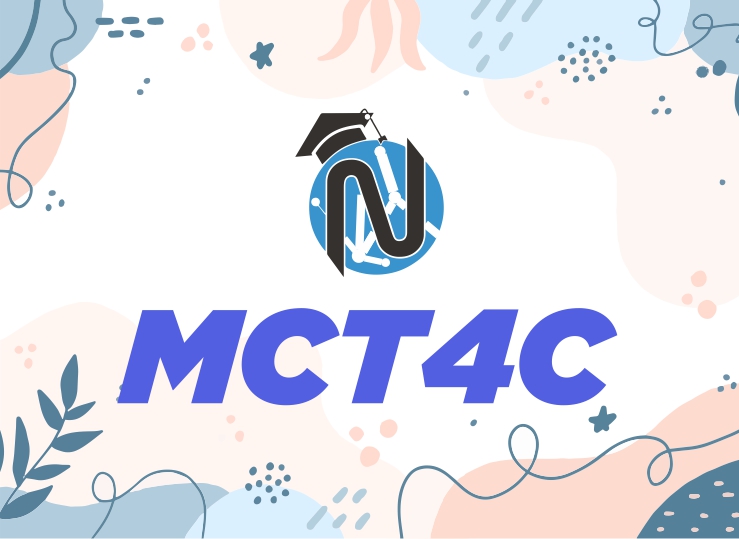
Mathematics for College Technology (MCT4C)
Course Description
This course enables students to extend their knowledge of functions. Students will investigate and apply properties of polynomial, exponential, and trigonometric functions; continue to represent functions numerically, graphically, and algebraically; develop facility in simplifying expressions and solving equations; and solve problems that address applications of algebra, trigonometry, vectors, and geometry. Students will reason mathematically and communicate their thinking as they solve multi-step problems. This course prepares students for a variety of college technology programs.
For Ministry Guideline Click Here
| Units | Descriptions | Length (Approximately) |
|---|---|---|
| 1. | Exponentials Functions This unit begins with a review of exponent laws taught in earlier courses of mathematics. Students are then introduced to the exponential function. Students will then learn methods of solving problems involving the exponential function algebraically and graphically. This leads into discussions about a related function, the logarithmic function. From here students learn about logarithmic properties and then apply their knowledge of exponential and logarithmic functions to solve real-world problems. |
30 hours |
| 2. | Polynomial functions In this unit students learn to identify and describe some key features of polynomial functions and to make connections between the numeric, graphical, and algebraic representations of polynomial functions. These concepts allow students to solve polynomial functions in a number of ways and apply their skills to solve real-world problems. |
20 hours |
| 3. | Trigonometric Functions In this unit students will review the trigonometric concepts taught in previous mathematics courses. Students will make connections between trigonometric ratios and the unit circle, allowing them to solve trigonometric problems quickly and with greater accuracy. Students will also review the sine and cosine laws, providing the necessary foundation to solve problems arising from real-world applications. |
25 hours |
| 4. | Application of Geometry This unit develops students’ understanding of three important areas of geometry: Vectors, Measurement, and Circles. Students are introduced to the concept of vectors as measurements with both magnitude and direction. Students then learn to add and subtract vectors using a variety of methods. Finally, students explore various real-world applications of vectors. The measurement module focuses on the metric and imperial system of measure, and the conversions between various measures and systems. This unit also introduces real-world problems involving perimeter, area, and volume of shapes using both systems of measure. The last module focuses on the properties of circles. The circles module begins by introducing students to new terminology involved with circle geometry. Students also investigate methods for determining the area and perimeter of incomplete circles. Next, students will investigate and develop the properties of circles that will allow them to solve complex geometric problems. Finally, students will apply their knowledge of circles to real-world applications. |
25 hours |
| The final assessment task is to provide students to do Exam Review (4 Hrs) +Formative Exam (2 Hrs) +Culminating Task (2 Hrs) + Final Exam (2 Hrs) | 10 hours | |
| Total | 110 hours | |
Overall Curriculum Expectations
By the end of this course, students will:
- Solve problems involving exponential equations graphically, including problems arising from real-world applications.
- Solve problems involving exponential equations algebraically using common bases and logarithms, including problems arising from real-world applications.
By the end of this course, students will:
- Recognize and evaluate polynomial functions, describe key features of their graphs, and solve problems using graphs of polynomial functions.
- Make connections between the numeric, graphical, and algebraic representations of polynomial functions.
- Solve polynomial equations by factoring, make connections between functions and formulas, and solve problems involving polynomial expressions arising from a variety of applications.
By the end of this course, students will:
- Determine the values of the trigonometric ratios for angles less than 360º, and solve problems using the primary trigonometric ratios, the sine law, and the cosine law.
- make connections between the numeric, graphical, and algebraic representations of sinusoidal functions.
- Demonstrate an understanding that sinusoidal functions can be used to model some periodic phenomena, and solve related problems, including those arising from real-world applications.
By the end of this course, students will:
- Represent vectors, add and subtract vectors, and solve problems using vector models, including those arising from real-world applications.
- Solve problems involving two-dimensional shapes and three-dimensional figures and arising from real-world applications.
- Determine circle properties and solve related problems, including those arising from real-world applications
Assessment & Evaluation of student performance
Formative assessments are learning practices that provide important feedback to student progress. Examples include homework and quizzes.
Summative assessments form a foundation for final mark allotment at the end of the unit, term and final evaluation.
An achievement chart will be given to students at regular intervals and the purpose of the charts is to provide feedback to students in relation to content and performance strands.
| Knowledge and understanding | Communication | Thinking Inquiry and Problem solving | Application |
|---|---|---|---|
| 25% | 25% | 25% | 25% |
Unit Tests, Written assignments, presentations, Classroom Observations and Classroom conversations.










